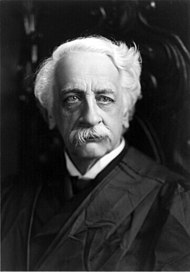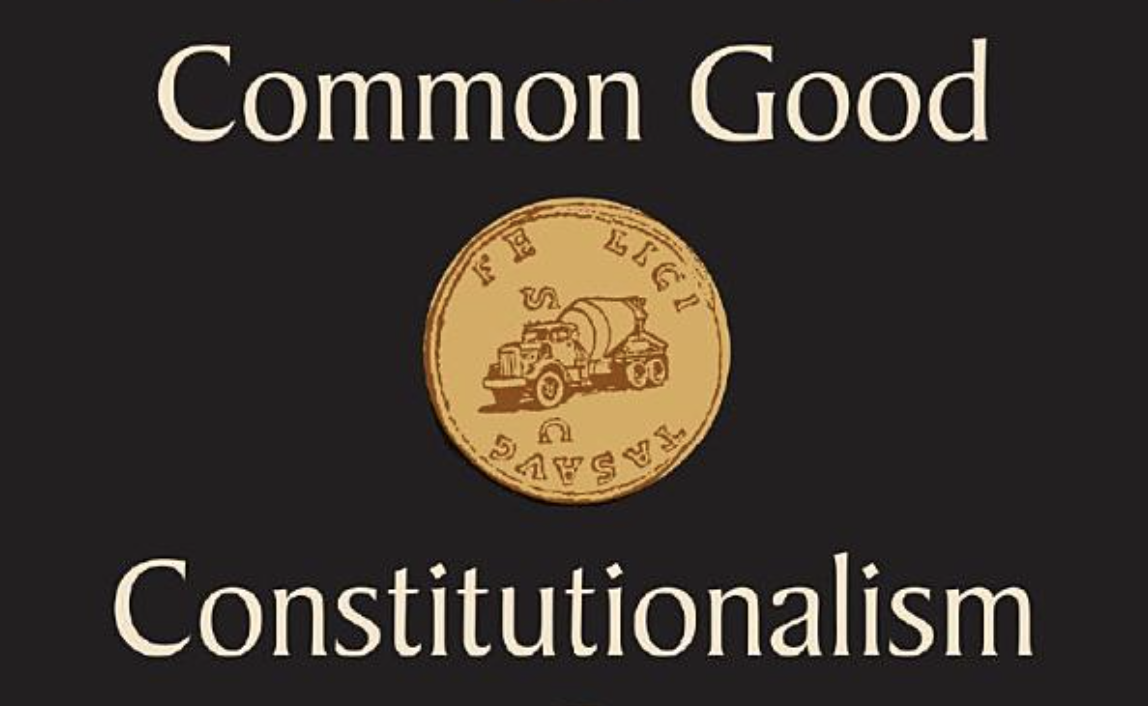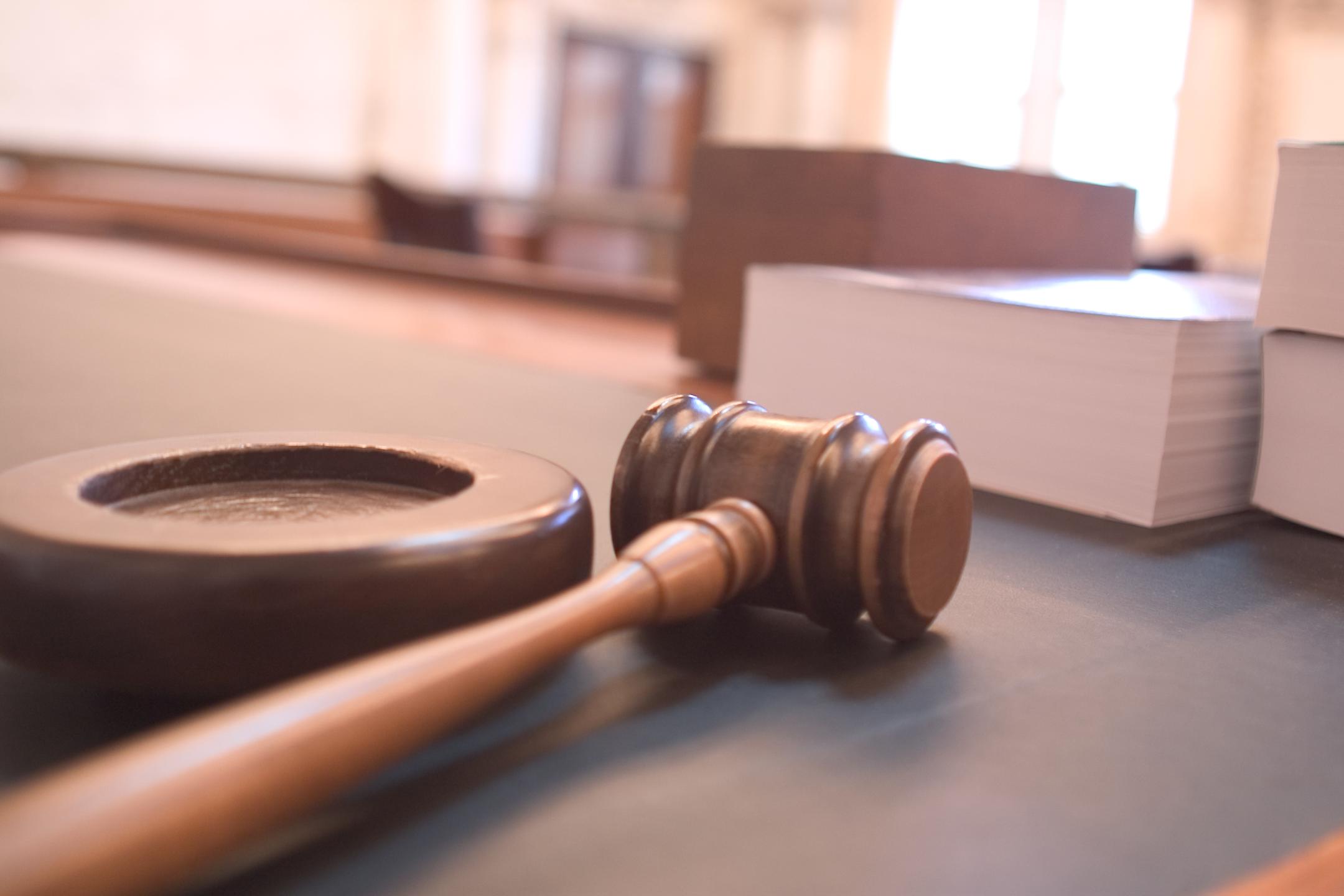Editor’s Note: This essay is both a review of one part of Prof. Adrian Vermeule’s book Common Good Constitutionalism as well as a response to a forum hosted by Law & Liberty. We include it among the other reviews of Common Good Constitutionalism published at Anchoring Truths. The essay is published with permission from Law & Liberty.
Jim Stoner’s lead forum essay, focusing on Adrian Vermeule’s common good constitutionalism, invites us to consider whether we are experiencing something “new under the sun.” Is common good constitutionalism really a boogeyman deserving of the hundreds of think pieces launched after the March 2020 publication of his “Beyond Originalism”? Vermeule himself would not claim that he is proposing something new. To him, common good constitutionalism, with its reorientation of American law toward the classical legal tradition, represents a long abandoned third alternative to a false, contemporary dichotomy. That dichotomy consists of a positivist, historicist flavor of originalism en vogue among legal conservatives at present and progressive constitutionalism enthralled by a liberationist pursuit of autonomy popular among leftists.
But the young journalist and astute observer of trends in conservatism, Nate Hochman, went a step further in arguing recently on Twitter that Vermeule’s third alternative has not been long abandoned in American jurisprudence and rather that “Hadley Arkes has been on the common-good constitutionalism wave for decades.” Hochman sees Vermeule’s project as “close enough” to the morally infused, natural law flavor of originalism that Arkes has advocated for over fifty years, which Stoner recognizes. Furthermore, no less an authority than Judge William Pryor lumped the work of Arkes in with Vermeule when Pryor termed that both espouse “living common goodism” in a speech last year.
As Arkes’s colleague for nearly a decade at his James Wilson Institute, I am as well-situated as anyone to discern whether Hochman (and Pryor) are correct. The natural law-infused originalism of Arkes shares much with Vermeule’s common good constitutionalism, most significantly an understanding of law and morality as inextricably bound together. Vermeule credits Arkes, among other scholars, in Vermeule’s recently published book Common Good Constitutionalism for having been a significant figure in the treatment of natural law in relation to the classical law. Stoner rightly points to the manifesto that I, Arkes, Josh Hammer, and Matthew Peterson co-authored last year, A Better Originalism, as exemplifying the resurgence of interest in a morally thick jurisprudence that Vermeule appreciates in part. Stoner also correctly sees us authors of A Better Originalism as endorsing appeals to the common good but also noting that we do not share Vermeule’s understanding of administrative law as possessing an “inner morality” that necessarily legitimizes its appeals to the common good.
These are just a few distinguishing elements between the jurisprudence of Arkes and Vermeule. But perhaps the most useful window into their two jurisprudential approaches are their writings on the assortment of opinions in the seminal case of Lochner v. New York. Their approaches rhyme often but never echo one another. The respective emphases they place on different aspects of each of the three opinions in Lochner deepen our own understanding of the role of the judge in distilling the common good in our constitutional scheme. Moreover, their approaches share a critique of “conservative jurisprudence” as has been practiced over the past fifty years. This critique grafts nicely onto two of the opinions in Lochner, notably different from the critique contained in Justice Holmes’s famous dissent.
A Trade of Forms
Vermeule lauds Justice John Marshall Harlan’s dissent while Arkes prefers the majority opinion authored by Justice Rufus Peckham. Harlan offered some handsome reasoning in his opinion for how a cap on the maximum hours of bakers could be regulated by state law to redound toward the common good. Harlan tests whether an identifiable harm exists that the state law may lawfully address within its proper authority. The health and safety of bakers at the end of the nineteenth century in upstate New York was not a small matter. As Harlan’s opinion details, capping maximum hours on bakers was one popular tool, in theory, to prevent the worst effects on health caused by prolonged smoke and particle inhalation.
In so doing, Harlan’s reasoning defers largely to New York state’s legislature to enact such legislation: “the health and safety of the people of a State are primarily for the State to guard and protect.” Harlan cites numerous other cases in which judges held that the scope of the Fourteenth Amendment did not abridge the powers of the states to legislate according to their own vision of health, safety, and morals. Furthermore, should federal judges have the presumptive authority to identify those instances in which states have violated an expansive understanding of the Fourteenth Amendment’s liberty of contract, it will breed mischief in the states’ efforts to secure the common good, always worrying about abiding by an ever-shifting scope of the constitutional standard.
Thus, Vermeule’s appreciation for Harlan’s opinion is its deference not to majoritarianism, but rather to a legitimate state authority entrusted with care for the common good. The judge’s role is to test whether that public authority was acting in accordance with the common good. To Vermeule, Peckham’s “tendentious” majority with an individual rights-centric focus on constitutionality betrays the common good framework by taking pot shots at the substantive legitimacy of a state legislature enacting health and safety measures as well as the procedural legitimacy of federal constitutional deference to state legislative enactments. Harlan’s dissent is therefore a model, to Vermeule, for common good judging.
Stoner is incorrect when he writes that Vermeule has “little patience for federalism and the separation of powers.” Rather, Vermeule views them as prudential features of the constitutional order that are subordinate to the ability of the public authority best in a position to preserve the common good. I have written how common good constitutionalism amounts to, in practice, a trade of forms: our contemporary constitutional order’s de facto judicial supremacy for Vermeule’s de facto executive supremacy. But nothing in Vermeule’s scheme in principle requires executive supremacy. He has written that all actors in the constitutional scheme have a duty to uphold and bring forth the common good. Again, contra Stoner, Vermeule views institutional design as largely prudential, and each department within our separation of powers as having “boundaries [] set by the nature of law itself, as an ordination of reason to the common good.”
Rejecting Positivism
Harlan’s Lochner dissent may have the potential to be a model opinion for common good constitutionalism, but the precise facts of Lochner merit a judge treating it as an exceptional case. A natural law originalist judge in the mold of Arkes would glean those facts from a close reading of the record to support the individual rights claims by the targets of the legislation. Drawing on natural law reasoning as well as how unique the New York law was in Lochner, Peckham’s majority, praised by Arkes, recognizes that strenuous judicial testing of constitutionality includes the contours of the common good as well as remembering Stoner’s point that “the common good…is always paired with mention of justice or rights.” Arkes’s rendering of Peckham’s opinion therefore evinces something like a blind spot for common good constitutionalists. The common law encompasses the classical legal tradition’s well-known obligations on individuals to subordinate unfettered individual rights to the common good. But in so doing, as Stoner notes, the “common law’s concern for individual rights belongs to the classical tradition, not its liberal reinvention.”
Arkes’s focus, in his reading of Lochner, is on whether or not the statute in question could be justified according to the most demanding evidence of judicial testing, not the more modest test of Harlan’s that Vermeule prefers that “(1) the public authority may act for the common good; (2) by making reasonable determinations about the means to promote its stated public purposes; and (3) when it does, judges must defer.”
The core duty of a judge under Arkes’s natural law jurisprudence is to articulate a moral justification, true of necessity, that forms the basis for legal coherence. Legislative invocations of the common good in violation of axioms true of necessity can certainly invite judicial scrutiny. As a crude comparison using modern judicial parlance, Arkes demands strict scrutiny from judges who must abide by individual rights abridged by invocations of the common good whereas Vermeule demands only a rational basis. Arkes understands the duty of the judge as a co-equal branch holder in our constitutional scheme.
What were the facts that distinguished Lochner’s case to Peckham? In his 2010 book Constitutional Illusions and Anchoring Truths, Arkes approvingly cites Peckham’s distinction that this case bore on whether a third party could sue to prevent another worker’s permission to work additional hours. This was an important distinction because unionized bakeries, third parties to otherwise private arrangements made by non-unionized employers and employees, would readily support the ability to prevent a class of non-unionized competitors.
But what if Harlan was correct about the dangers of longer hours of working amidst the dangerous conditions of late nineteenth-century bakeries? Does not the long-term health of workers redound toward the common good no matter what one individual baker would protest? Peckham addressed in the opinion and Arkes further explains that Harlan was working with outdated facts. Work within bakeries had already been largely mechanized, eliminating much of the dust and smoke inhalation fears, and the safety for bakeshop employees had according to one treatise had improved to be counted among the middle of the pack of all occupations, safer than even working as servants at inns at the time.
Furthermore, according to Lochner expert David Bernstein, the formal and procedural aspects of Peckham’s opinion cut strongly in favor of treating Lochner as a special case. The New York state legislature enacted the maximum hours law not under its health code but rather its labor code, undercutting the state’s health pretext. And more importantly, the state legislature crafted an “unusually strict” statute, in Bernstein’s words, threatening criminal penalties for violations and no overtime provisions. Indeed, the strictness of these provisions distinguished Lochner as the only maximum hours law that the Court would strike down of the more than dozen that it would uphold in the years surrounding Lochner. At core, the natural law precept that a maximum hour cap violates is that it is wrong to draw moral inferences from acts that are wholly neutral. The desire to work additional hours does not imply, with deterministic force, that a class of persons has committed a moral wrong.
The upshot of all this is that it was wholly legitimate for the judges in the Lochner majority to do what they did, despite the hoary cliches of Lochner as “substantive due process” invoked by contemporary jurists. But let’s take a step back and train our eyes on the present. The robust debate between Peckham and Harlan has relevance for the debates over the common good and the role of the judge in our own day. This essay has heightened the differences between Harlan and Peckham, as well as Vermeule and Arkes. But the differences between all four figures melt away when refocusing attention to the significant point of agreement for them: the poverty of Holmes’s dissent.
Holmes rejects outright any role whatsoever for judicial testing in the most demanding way legislative enactments. Connecting to the present, Holmes’s dissent represents par excellence the received wisdom of conservative jurisprudence whose proudest boasts over the past fifty years have been to proclaim that certain rights are not explicitly in the text of the Constitution and that any judicial inquiry into the common good amounts to an abdication of judicial duty. Vermeule, in his invocation of Harlan’s dissent in Lochner as a model opinion for common good constitutionalism, notably joins Arkes in rejecting the majoritarian positivism of Holmes’s dissent. Vermeule concurs with Arkes that Holmes’s desiccated positivism lingers at the heart of much of what passes for conservative jurisprudence today.
Conservative lawyers largely follow Holmes, in The Path of the Law, when he remarked that the modern project in the law is to strip all words of moral significance from it. But an emerging cohort of young, thoughtful conservative lawyers who reject this positivism has ample recourse to follow in the style of moral and legal reasoning on display in the Peckham and Harlan opinions rather than offer warmed-over versions of Holmes. Peckham’s reasoning persuades me more than Harlan’s reasoning for the reasons cited above. Thoughtful lawyers will differ when future cases arise.
And based on the conclusion to his opening essay in this forum, Stoner believes that the kind of inquiry performed by Harlan and Peckham is entirely appropriate for judges. When Stoner writes that he can support a jurisprudence that tests whether “our constitutional rights recover what I have called their common-law and their republican interpretation, where liberty is not confused with autonomy and the exercise of freedom can be judged as better or worse” even under the banner of “common good constitutionalism” he is, unsurprisingly, welcoming a jurisprudence of natural law. But, Stoner makes this point quietly or implicitly.
However, the appeal of Vermeule and Arkes, even while boasting differences in discerning the natural law grounds on which we may make distinctions on what types of evidence redounds toward the common good, is that they both explicitly recognize that an unhealthy denial of the importance of natural law reasoning plagues the work of the contemporary judge. If we are not experiencing something new under the sun, it’s because Vermeule has joined Arkes in correctly diagnosing what ails our legal order.
This article was originally published in Law & Liberty, click here to see the original publication.







